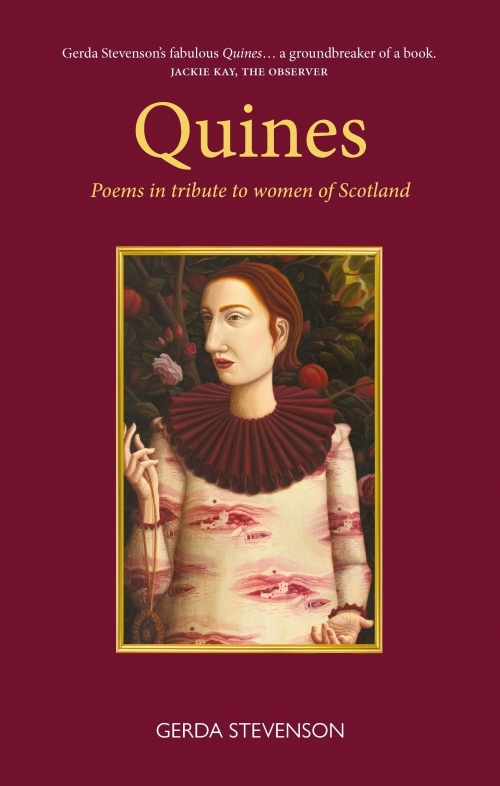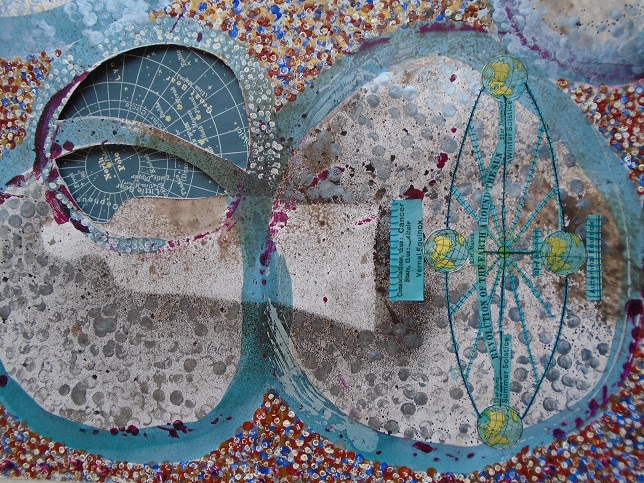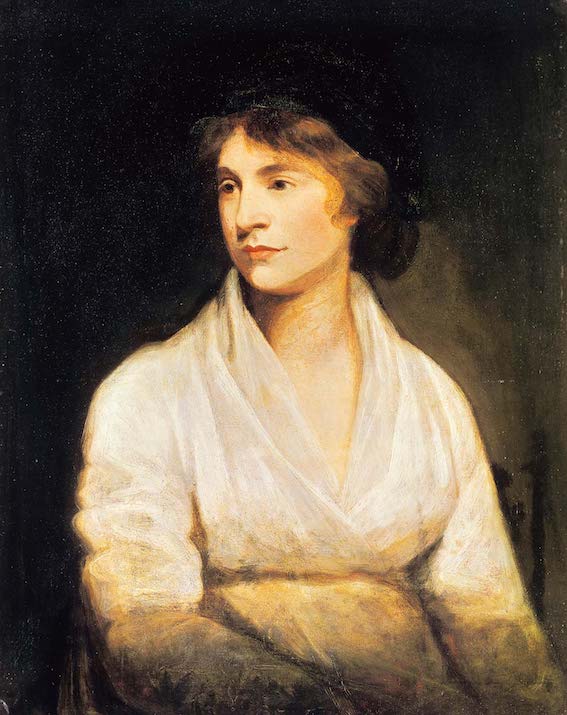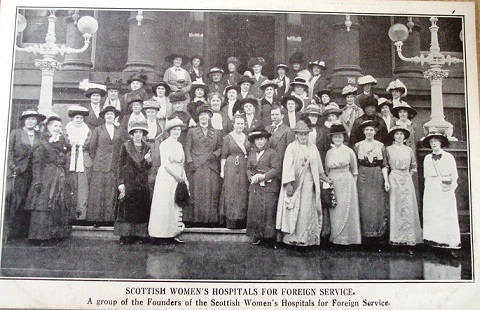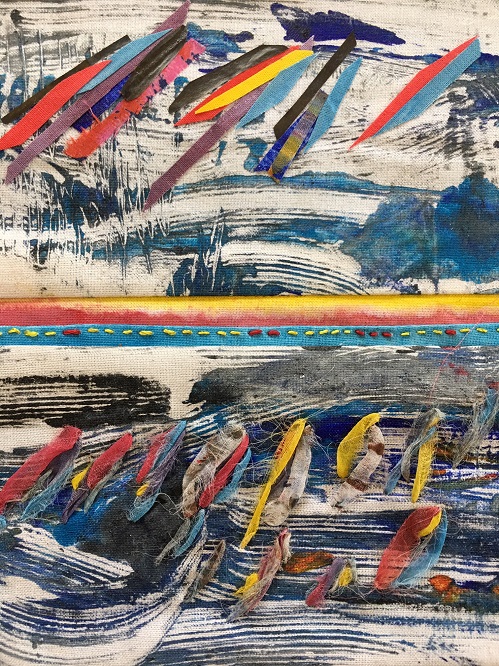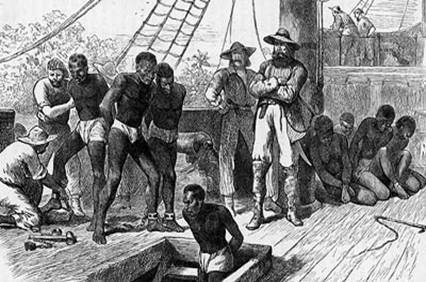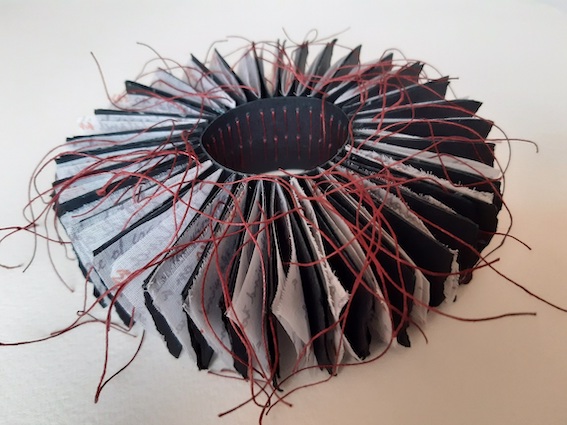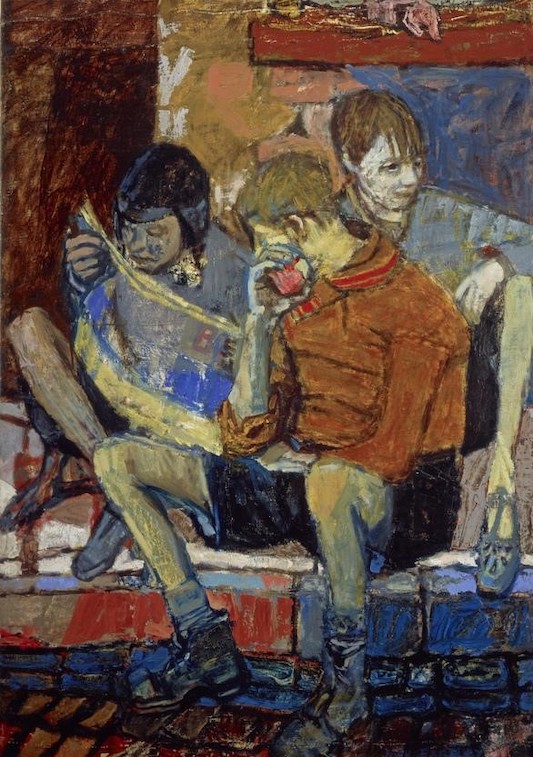We are posting this review by one of our contributors, Jim Aitken, of Quines, Poems in tribute to the women of Scotland, written by Gerda Stevenson (https://en.wikipedia.org/wiki/Gerda_Stevenson). This review was first posted by Culture Matters. Accompanying illustrations of textiles are by artists from EDGE: Textile Artists Scotland.
A FEARLESS GAZE OF HOPE – ‘QUINES’
The second edition of Gerda Stevenson’s Quines came out with some fanfare as it was launched to coincide with International Women’s Day. The launch at the Central Library in Edinburgh was also accompanied by a unique exhibition in honour of some of the poems in the book by EDGE: Textile Artists Scotland.
The new front cover of this second edition arose out of the Scottish artist Helen Flockhart hearing Gerda read the poem The Abdication of Mary Queen of Scots – a poem in the book – on Radio 4’s Woman’s Hour. Helen’s painting was part of her own exhibition Linger Awhile based on the life of Scotland’s tragic queen in 2018-19. Gerda commended the ‘the creative sisterhood’ that came with the launch of the second edition of her poetry collection.
A quine, it should be said, is the Scots word for a girl and it is being used to name all the women featured in the book. The first edition came out in 2018 and was reprinted in 2019. The new second edition of 2020 has two new poems along with a new introduction and is currently being translated into Italian by Laura Manieri with a grant from Publishing Scotland. Quines is clearly a major work. It took Stevenson four years of research along with a few chance encounters that had entered her poetic imagination for this book to take shape.
Textile by Moira E. Dickson
The name Frances (Fanny) Wright is certainly one I was not familiar with. She was born in Dundee in 1795 and was very much a product of the Scottish Enlightenment despite that period not being particularly enlightened with regard to women. She was a writer, orator, feminist, abolitionist, champion of the rights of workers, a critic of the banks of her day and a critic of religious institutions. She spoke openly of the pleasures of sexual passion while also seeing marriage as a form of bondage, and campaigned for divorce, for birth control and for property rights for married women. She was also the first woman to edit a newspaper, The Free Enquirer.
She had gone to America and became a close friend of Walt Whitman who said ‘she was a brilliant woman…who was never satisfied unless she was busy doing good – public good, private good.’ She had also been admired by Mary Shelley and they were close friends. Mary Shelley had died before Fanny Wright and this enabled Stevenson to call her poem Fanny Wright Meditates on Mary Shelley’s Death.
As she laments her death she recalls her own life and mentions some of the terms that had been labelled against her – she was The Red Harlot of Liberty and The High Priestess of Infidelity. In her sadness for Mary she reflects on their achievements:
Those I’ve loved are gone, and now you too,
who held your mother’s torch, the flame that grew
with every step we took to forge a world
pledged to the common good…
These touching lines show the debt that women of this era had to the ‘torch’ that was Mary Wollstonecraft, the mother of Mary Shelley. Her Vindication of the Rights of Women appeared in 1792, where Wollstonecraft sought to apply the egalitarian principles of the American and French revolutions to women.
Though the backwoodsman Walpole called her ‘a hyena in petticoats’ many modern feminists have returned to her hugely significant work for inspiration.
Stevenson had first come across Wright in Barbara Taylor’s Eve and the New Jerusalem (1983) and in Celia Eckhardt Morris’s biography Fanny Wright: Rebel in America (1984). While performing in New York in 2012 Stevenson visited the Walt Whitman Birthplace Historic Site at Long Island. On entering the building the first thing she noticed was a portrait of Fanny Wright placed between portraits of Whitman’s parents.
A year later, while working in Shetland, she had gone to Lerwick’s Shetland Museum and saw the reconstructed head of a young woman. There were, she says, ‘five thousand years between us’ in her Prologue poem Reconstructed Head of a Young Woman. She begins to imagine what this young woman’s life had been like, as she observed the hair that ‘falls like mine,’ the ‘salt-washed cheeks’ and her ‘fearless gaze of hope.’ By the time Gerda had landed back on the Scottish mainland she had written the poem of her encounter with the young Shetlandic woman.
Scotland’s Forgotten Women
We are often what we were before. The young woman in Lerwick Museum and all young women today hold much in common. They have shared hopes and dreams and know acutely what it means to be a woman. Like Fanny Wright the young woman with the reconstructed head had been forgotten about, relegated from history, their existences marginalised.
The encounter through a pane of glass in a museum has much in common with Seamus Heaney’s discovery of P.V. Glob’s The Bog People, first published in English in 1969. In this book Heaney discovered that the bodies that had been preserved in the bogs of Jutland and elsewhere in northern Europe gave him a much-needed metaphor to compare what was happening in Northern Ireland during the so-called Troubles.
Ritualised murders and scapegoating had taken place thousands of years ago and this enabled Heaney to relate this to the sectarian and community conflicts being waged in Northern Ireland, as the peaceful civil rights demonstrations began to be attacked and then descended into violence. Also, by referring to those ancient murders Heaney could allow his poetry – particularly his collection North (1975) – to rise above any partiality on his part and to universalize the horrors that were playing out in his own North at the time. Similarly, Stevenson could see the affinity she had with the young woman of Shetland in that, like her, she was female and part of what Simone de Beauvoir labelled The Second Sex (1949) in her ground-breaking study of women.
Visits to museums can crystallise ideas but what had to be done first was to do the background work, the reading and research into many of Scotland’s forgotten women. That research took four years and it was The Biographical Dictionary of Scottish Women (2006), reprinted in 2018, which Stevenson has said was ‘an invaluable resource.’
Quines brings together a diverse array of Scottish women – politicians, queens, a salt seller, a half-hanged woman, scientists, writers and artists, singers, a dancer, a fish-gutter and others. They are all remarkably well studied, vital individuals who, like the young woman of Shetland, had fearless gazes of hope for all women and indeed for all. They also had fearless voices and an innate determination to be heard and seen. While not all men have been able to do this in class-ridden societies throughout history, it has been doubly difficult for women. As James Connolly succinctly put it when he first saw the poor women of Dublin, calling them ‘the slaves of slaves.’
Further back, nearly three thousand years ago, Homer told us in The Odyssey that various groups of men had arrived at the home of Odysseus to hear if there was any news of his homecoming. His wife Penelope had been waiting for news herself and she is about to talk to the guests when her son Telemachus tells her –
Go back into your quarters and take up your work, on the loom…speech will be the business of men, all men, and of me most of all; for mine is the power of this household.
At the outbreak of the First World War the British Government’s War Office had told Elsie Inglis and her Scottish Women’s Hospitals – ‘Good lady, go home and sit down.’ Clearly, there had been no change in attitude to women since the days of Telemachus. Stevenson gives Elsie her voice back in Elsie Inglis Prepares for her Last Journey in a sensitively written poem where Inglis, dying from cancer, considers the impact that she and her comrades of the Scottish Women’s Hospitals have made:
my women, saving lives, proved
what’s plain as day: that we are equal
daughters, sons, husbands, wives.
A Fearless Gaze of Hope
Mary Beard tells us in Woman and Power (2017) that in classical times women were not allowed to talk in public unless they dealt with their own sectional interests or their victimhood. Yet today when women do talk in public they are viciously abused, with women MPs receiving more vitriolic and obscene abuse than their male counterparts. And as for social media the most common comment directed at women is ‘Shut up, you bitch.’ Stevenson knows all this but both she and her book have simply sailed through these rough seas without even getting wet. Her book of Quines rises above such negativity with ‘a fearless gaze of hope’ and optimism.
This poetry collection also features women who were not born in Scotland but came from other countries to live here. Some of her quines, though Scottish by birth, had emigrated from Scotland. What is significant about this is that her only criteria for women being included in Quines is that those who were in Scotland and played their part here can be seen as Scottish, as Scottish as they ever wanted to be.
This chimes particularly well with the recent Scottish Independence Referendum of 2014. Eligibility to vote in that referendum was based simply on being in Scotland, living there and working there. This, of course, was in sharp contrast to the Brexit Referendum of 2016 that excluded EU citizens living and working in the UK. Gerda’s generosity with all those included in Quines seems to mirror the current mood of openness that is being shown to migrant workers in Scotland, as there is the recognition that the economic contribution they make to Scottish society is extremely valuable.
The three languages of Scotland are all represented, with Stevenson showing that she is as skilled in Scots as she is in English. She also uses Gaelic words and phrases in poems where her women have come from that culture or have been referred to by that culture. She takes a chronological approach to all her women placing them in their own times and in so doing she brings the rich tapestry of Scottish history to life with its incursions from Ireland, from Viking lands like Norway and from elsewhere.
Nessie, the Original Sexy Beast
The collection begins with Nessie, the Loch Ness monster, who is indisputably female. Stevenson does not even mention that according to Adomnan, in his life of St Columba, believed to be written between 697 -700, that it was the saint who was supposed to have tamed the monster. Nessie was clearly not for taming as her ‘fearless gaze’ seems to ‘strike terror in your hearts.’ Yet this monster is much more than a figure of fear. Her ‘paps slope with the grace of Jura.’ Gerda uses the Old Norse word ‘paps’ meaning ‘breasts’ and the Paps of Jura were named by Norse settlers to describe the look of the three mountains on that island. This word, it has to be said, has also been used by many a Scottish schoolboy directed at his female class-mates. Gerda, however, reclaims the word for Nessie and then describes her ‘nipples bright as fresh water pearls, sleek hips fit for tender cargo.’ In this description she cleverly creates for us the original sexy beast.
However, her Nessie, though clearly happy in her own skin, also has a mind ‘broad as your kyles.’ She has been around ‘long before the Romans named the Picts.’ She has seen our entire history and will continue to ‘elude your sonar probes and camera clicks.’ Nessie possesses depth and will only reveal herself when we ‘can see beyond the surface.’ This is a playful poem on one level but deeply serious on another.
Textile by Sue Fraser
In The Abdication of Mary Queen of Scots Stevenson informs us in the biographical note between the title and poem – a clever technique she uses throughout the collection – that Mary miscarried twins while imprisoned in Loch Leven Castle in 1567. Mary talks in Scots to her last lady-in-waiting, Mary Seton, who is tearful at her Queen losing her crown:
…..och, Mary, Mary Seton, last
o ma fower leal ladies, dinna waste yer tears
on gien up a bitte gowd an glister, haud ma airm
if it helps, but dinna, dinna greet fur this.
These lines are among the most emotionally charged ones in the collection. Mary is saying that a bit of gold and glitter (‘bitte gowd an glister’) is nothing compared to the lives of the twins she lost. Mary offers Seton her arm – ‘haud ma airm’ – rather than Seton offering Mary comfort. The repetition of ‘dinna’ is written as an exhortation that masks the utter desolation she actually feels. These feelings of sadness and loss, however, are not for the loss of her crown but for the ‘twa bairns….twa scaps o heivin.’
Sugar, slavery and exploitation
The poem Demerara introduces us to Eliza Junor who was born in Demerara, now modern day Guyana, to Hugh Junor, a slave owner from the Black Isle, and an unknown mother who would have been a slave. Stevenson tries to imagine Eliza in her new land detecting the strange contradiction of where she now finds herself in ’the Black Isle of white people, where I’m glad no cane grows.’
Eliza had won a prize at Fortrose Academy for penmanship and Gerda cleverly uses the words of the ‘dominie’s wife’ (teacher’s wife) telling Eliza about all the other ‘tawny’ types like her who are appearing in Cromarty, Tain and Inverness. The teacher’s wife was pouring tea and when Eliza declines any sugar the wife exclaims: ‘But it’s Demerara…It’ll make you feel at home.’ Declining sugar is perfectly understandable for Eliza since it conjures up the horrors of the slavery that went into its production. Eliza watches ‘the gold beads…melt in the peat-brown pool’ of the cup.
This poem is incredibly important, because it deals with Scotland’s role in the slave trade. It is only in the last fifteen years that any serious academic research has gone into the role played by Scots in that ghastly trade. In one of Walter Scott’s novels, Rob Roy (1817), there is a passage that shows how there was a refusal to adequately admit to that role:
When the cloth was removed, Mr Jarvie compounded with his own hands a very small bowl of brandy-punch, the first which I had ever the fortune to see. ‘The limes,’ he assured us, ‘were from his own little farm yonder-awa’ (indicating the West Indies with a knowing shrug of his shoulders).
What happened ‘yonder awa’ was brutal exploitation, and it should be remembered that Scotland’s greatest poet Robert Burns had at one time seriously considered becoming ‘a negro driver’ in Jamaica. Stevenson’s poem also mentions several Highland place names – Cromarty, Tain and Inverness – and these places seem at odds with the narrative that Scots have often nurtured about the brutality they suffered during the Highland Clearances when houses were burned and people forced to emigrate in large numbers to make way for the more profitable sheep that came with Union. While that episode can never be ignored, these place names in the poem show that many Scots, as well as being oppressed, were in fact oppressors themselves.
In Reconsidering Scotland’s Slavery Past (2015) Tom Devine brought together various academics to seriously look at Scotland’s role in the slave trade associated with the Caribbean. Scots had been numerous in Demerara. The slaves, it was said, called prawns ‘Scotsmen’ not because their skin turned pink in the sun but because they all stuck together. Herring caught in the North Sea had been mixed with oats to provide meals for the slaves, and the canvas clothes they wore had also been manufactured in Scotland and sent out to Demerara. Slavery had a massive economic impact beyond institutionalising free labour.
This is uncomfortable history but it is a history that has to be told. David Hayman brought out the TV programmes Slavery: Scotland’s Hidden Shame for BBC Scotland in 2018 and these programmes explored those uncomfortable truths particularly well. However, that was what Union was all about. Union with England was an imperial construct whereby Scotland gained access to England’s ‘overseas markets.’ – its colonies. Along with imperialism abroad there was the spin-off from industry at home as goods from those markets came back here to be manufactured.
The arch-imperialist Cecil Rhodes summed it up quite aptly when he said: ‘To avoid civil war at home, we must become imperialists abroad.’ He recognised the class divide and saw in Empire, with its crumbs thrown at the working classes, the solution to the maintenance of that divide. Today, however, with empire gone and large-scale industry also gone, the Union is decidedly shaky. All that seems to remain of that imperialist legacy are the awful ditties like Rule Britannia (1740) and Land of Hope and Glory (1901). The national anthem God Save the Queen is also part of this imperialist legacy. These songs seek merely to perpetuate the national notions of former greatness.
So it was ludicrous to listen to Rees-Mogg and Widdicombe saying that they wanted Britain to break free from ‘the imperial yoke of the EU’ as if Britain had become enslaved, when it was Britain that had developed and sustained slavery on an industrial scale.
Demerara has much in common with Hamish Henderson’s famous song Freedom Come All Ye (1960). Henderson’s song not only mentions the republican-socialist John MacLean but is in essence an internationalist song that urges Scotland to have nothing more to do with the British imperial construct that plunders abroad. Stevenson’s sympathies are similarly with Eliza Junor who is equally opposed to the imperial plunder abroad that makes her refuse the sugar in her tea. Her quine Eliza, therefore, has much in common with Henderson’s ‘black boy frae yont Nyanga’ in his stirring song.
Helen Crawfurd and liberation theology
John MacLean – who formed Scotland’s first pro-independence party, the Scottish Workers Republican Party in 1923 – and the Edinburgh-born James Connolly are both mentioned in the Quines poem Helen Crawfurd’s Memoirs in Seven Chapters. Crawfurd was a suffragette, a Red Clydesider, one of the founders of the Women’s Peace Crusade during World War 1 and a founding member of the CPGB. She had been involved in the window-smashing in one of the suffragette direct actions in London, and also planted a bomb in Glasgow’s Botanic Gardens. She had also sneaked into Moscow to meet Lenin and Krupskaya, Lenin’s wife, after the Russian Revolution. She had become the Secretary of the Workers Relief Organisation, working in the Highlands and in Donegal with Constance Markiewicz as well as supplying relief and support to miners during the General Strike of 1926.
Crawfurd married ‘a man of the cloth, threefold my age’ and as a minister’s wife she would have visited the houses of the impoverished parishioners in the Anderston district of Glasgow, and seen the ‘bow-legged bairns’ in those houses suffering from malnourishment. This experience had radicalised her.
Like a number of Stevenson’s ‘Quines’ Crawfurd had been religious, but like them – particularly Mary Slessor in Mary Slessor Takes St Paul to Task – she questioned the prevailing theologies and religious orthodoxies of her time. Crawfurd’s reverend husband had preached ‘care’ while Crawfurd said she took:
…St. John to heart:
may his truth be known that we must love
the brother we have seen as much as
God we have not seen, or else we lie.
Crawfurd’s Christ ‘could be militant…he whipped the moneylenders from the temple.’ Like Slessor before her Crawfurd was a liberation theologian before the advent of liberation theology proper in the second half of the 20th century.
Textile by Yvonne Tweedie
Along with Mary Barbour and her army of women who fought the rogue landlords who increased rents while their men were fighting in the hell of the trenches, Crawfurd had joined the working-class women fighting the bailiffs. They would be pelted with bags of flour and with less savoury substances too. These women also joined ‘forces with MacLean’ in opposing the war. The war broke Keir Hardie’s heart, and Crawfurd castigated Christabel Pankhurst for supporting it: ‘Shame on you, I cry.’
Once dubbed ‘Queen of the Mob’, Miss Pankhurst has ‘changed her tune’ as she is:
…enlisting men, pinning their guilt with white feathers
stolen from our dove, impressing women to munitions,
Britannia’s clarion call stoking Europe’s fire
and denying equal pay…
All the indignation of the working-class women in Glasgow and beyond is found in these lines. Women made placards and placed them on their window sills at home looking out to the streets, reading ‘RENT STRIKE WE ARE NOT REMOVING.’ Like most oppressed people who come together in solidarity to fight injustice, these women won their heroic struggle as the Rent Restriction Act of 1915 made it illegal for landlords to increase rents while this war was being fought.
Lift the Have-Nots From Obscurity
Helen Crawfurd and Mary Barbour had on occasion visited the Fife home of young Jennie Lee to meet with her parents. Lee went on to become a Labour MP and created the Open University which, along with the NHS – valiantly dealing with the coronavirus at present – and the welfare state, were among the best and most progressive achievements of the Labour Party.
In I am Jennie Lee’s Open University Stevenson imagines that entity itself speaking in praise of its conception. Thomas Hardy’s Jude the Obscure (1895) was one of Lee’s formative books when she was a student because Jude was denied the opportunity to go to university because of his social class. What Lee sought to do with the ‘wee bastard’ that was the White Paper she brought to the Commons was to:
…..lift the have-nots from obscurity
by releasing knowledge like caged birds into the open air.
Knowledge has always been power, and without it the powerless remain powerless.
Stevenson uses so many ingenious voices for her poems. If the actual character herself is not doing the speaking it is someone else – a couple of times Stevenson herself – or something associated with that character. It is a challenging task to do all the necessary research for Quines, and another challenge altogether then to write the actual poems. Stevenson’s method, she has said, is in ‘finding a hook’ with which to write the poem. This is where all the invention with voice, with who speaks, comes in. These are the actual hooks for her poems.
So for example, in At Miss Eardley’s it is the street children of Glasgow’s Townhead district who give the poem its collective voice. The children would go into ‘the big room at Miss Eardley’s’ where the artist Joan Eardley would paint. She would paint these children or sometimes she would be ‘drawin us wi sticks o chalk on sandpaper.’
Street Kids, by Joan Eardley, 1949
Eardley is recognised as one of Scotland’s premier artists and the fact that she was born in West Sussex seems totally irrelevant. She lived and worked in Scotland and Scotland has claimed her as her own. Interestingly, in Catterline in Winter Stevenson wrote of Eardley’s painting of that name in her first poetry collection If This Were Real (2013). In this poem she writes in English of the area Eardley also lived and worked in on the north-east coast of Scotland. Stevenson observes in Eardley’s painting how:
The homes are sledging
down the hill
in the blind gaze
of a pandrop moon.
This is an image in words every bit as good as the actual painting. The artist and the poet are viewing the same scene and seeing it in complementary ways.
One final poem – there are over 60 in the collection – that again shows Stevenson’s creative resourcefulness with voice is The Living Mountain as it ‘Addresses a £5 Banknote.’ Less than half an hour’s journey from Catterline, the writer Nan Shepherd was born in Peterculter in 1893. The Living Mountain is in fact the Cairngorms where Shepherd would often walk. She wrote of her walks there in The Living Mountain in 1941 although the book was not published until 1977. Shepherd had been environmentally aware long before the rest of us were panicked into concern.
The Cairngorms speak to Shepherd as her image now adorns a Royal Bank of Scotland £5 note brought out in her honour. Like Shepherd the mountain loathes litter:
I dislike litter, especially your kind-polymer particles
that issue in blizzards from careless markets, slip
from pockets, won’t perish in rain or melt with snow.
The Living Mountain does, however, make an exception in the case of Shepherd because she was:
…the woman who never rushed
to my summits, but walked into me, took time to learn
my every line – schist, gneiss, granite – and heard
my braided voice.
Quines is a book of voices, a book of radical women’s voices. It is a celebration as much as a tribute to women, achieved by incredible skill and a great deal of hard work.
Gerda Stevenson has brought all her other artistic selves – as singer, songwriter, actor, dramatist, director – to aid her in this collection. The poems all possess an air of theatricality about them, as woman after woman takes to the stage to tell her tale and celebrate her life. Quines is a triumph of voice as much as Beckett’s characters keep talking freely because women, denied the chance to speak in public for so long, say whatever they want here. And, of course, they are all well worth listening to and learning from.
Gerda’s language is rich, bold and, at times, playful. Her forms for her poems are inventive – there are haikus and villanelles here – and each poem is thoroughly thought through before it is presented on the page. Her voice demands to be heard, like the voices of the women who have now become part of her. She has much in common with two of these women in particular – Kantha Sari Heirloom and Tessa Ransford – because like them she is also a cultural activist. Quines is as much a product of cultural activism as it is the product of an artistic intelligence.
All the women in Quines look at us today with their ‘fearless gazes of hope’; their voices demanding better from a world that stupidly thought it could oppress, relegate or distance them from life and from the heady matters of the world. Maya Angelou would have called these Quines ‘phenomenal women’ and would have hailed Gerda Stevenson’s achievement too as phenomenal. Quines is a radical collection written by the radical poetic intellect that is the bonnie fechter (intrepid fighter) herself, Gerda Stevenson.
The bonnie fechter herself……
Quines: Poems in Tribute to Women of Scotland, by Gerda Stevenson is available from
Luath Press at £9.99
This was first posted by Culture Matters at
__________
also see:-
http://republicancommunist.org/blog/tag/author-jim-aitken/
Mary McGregor reviews ‘The Last Calendar of Events’ by Jim Aitken
and

